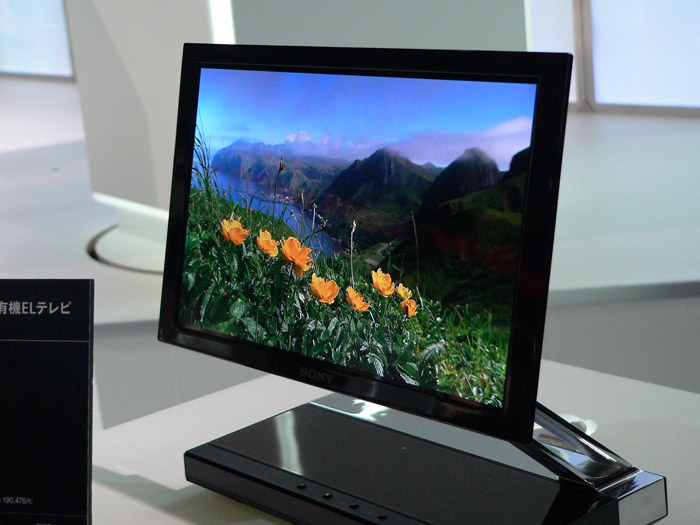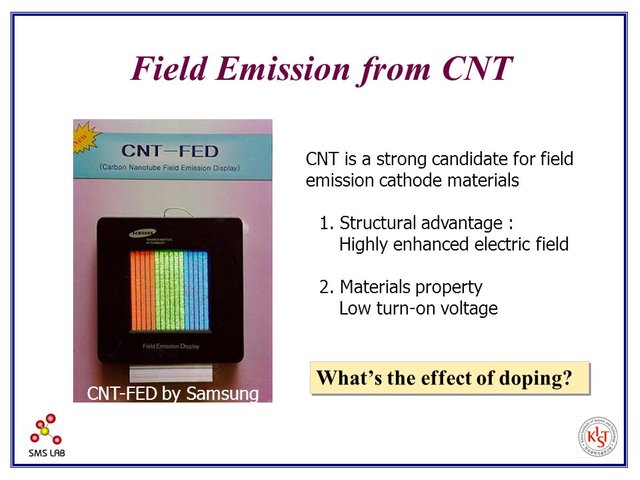Development of Field Emission Display (FED) Based on the Idea of Lightning Rod
Dear steemians. How are you today? I hope you are feeling well. Today I want to share about Development of Field Emission Display (FED) Based on the Idea of Lightning Arrest.

The development of displays in recent years has made significant progress. When it first appears, we recognize the display in the form of a tube. Generally use cathode ray tube (CRT). We used to know the display CRT with black and white. Gradually with the development of CRT, cathode ray tube displays can be colored. At least there are three main colors in the CRT display used is red, blue, and green. In the 20th century, CRT displays were widely used in oscilloscopes, video monitors, and most notably on televisions and computers.
Along with the times, cathode ray tube displays are being replaced by a display known as a field emission display (FED). Nevertheless, the working principle of the display turned out to be similar. Both use electron beam shooting on a screen that has been coated with phosphorus material. This phosphor will then emit a luminance light and cause the screen to glow.
The second difference is the display, if the cathode ray tube display uses a tube to a pre-installed coil that generates a magnetic field. This magnetic field, that regulates the direction of cathode rays in the horizontal and vertical directions. This display requires an electron gun in which the electron gun must be heated so that a very large voltage must be installed. This magnetic field, that regulates the direction of cathode rays in the horizontal and vertical directions.
While the FED display is based on the idea of a lightning rod. Just like a lightning rod that uses pointed metal, the FED uses a microtip where the tip of this microtip metal is a pointed cone with micrometer size. As a result required a small potential that electrons regardless of microtip. With a small electric field then the electrons can be removed from microtip which then hit the phosphor on the screen. This phosphorus further displays the screen with only a small potential. The display becomes very thin and light due to microtip in the near position of phosphorus and not tubular.

Field emission displays have long been seen as ideal image visualization devices. The combination of their emissive nature coupled with high speed and other benefits make them a candidate to compete with liquid crystal displays in a major market. The technology has been difficult to realize but the combination of modern micro-fabrication techniques coupled with field enhancement from sharp structures as a source of electrons has enabled design solutions that have delivered displays with remarkable performance. However, manufacturing such devices has proven difficult. Modern attempts include nanotechnology and materials solutions that have delivered new hope. There is a common history to many aspects of field emission and common challenges in realizing a vacuum microelectronics–based technology. Source

FED Principles
The author believes that with the rapid technological development of the next microtip shaped like a lightning rod can be replaced by other materials such as carbon nanotubes (CNT). This CNT is essentially easier in electron discharges.
Carbon nanotubes (CNTs) are allotropes of carbon with a cylindrical nanostructure. These cylindrical carbon molecules have unusual properties, which are valuable for nanotechnology, electronics, optics and other fields of materials science and technology. Owing to the material's exceptional strength and stiffness, nanotubes have been constructed with length-to-diameter ratio of up to 132,000,000:1,significantly larger than for any other material. Source

Field Emission from CNT
We hope the development of the next display can be more qualified according to technological developments. In addition, the resulting display has the excellent picture and sound quality. More important is the use of energy is very minimal but high quality. In terms of size will produce the slimmest and lightest display. The authors are convinced such expectations will materialize.
Reference
- https://link.springer.com/referenceworkentry/10.1007%2F978-3-540-79567-4_72
- https://en.wikipedia.org/wiki/Carbon_nanotube
@nkkb Tecknologi yang amat canggih.
Silakan berhubung di Facebook messenger id nkkb bachee
Siap. Terima kasih.